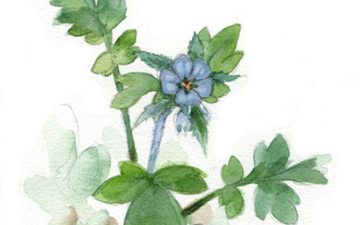Phacelia (phacelia, scorpionweed, heliotrope) is a genus of about 200 species of annual or perennial herbaceous plants, native to North and South America.[1]
The genus is traditionally placed at family rank with the waterleaves (Hydrophyllaceae) in the order Boraginales. The Angiosperm Phylogeny Group, recognizing that the traditional Boraginaceae and Hydrophyllaceae are paraphyletic with respect to each other merges the latter into the former and considers the family basal in the Euasterids I clade. Other botanists[2] continue to recognize the Hydrophyllaceae and Boraginales, but to make them monophyletic the present genus be moved to the Boraginaceae.[verification needed]
Many species are cultivated as garden plants and honey plants.
Contact with some species of Phacelia can cause a very unpleasant rash similar to that from poison oak and poison ivy in sensitive individuals. The major contact allergen of Phacelia crenulata has been identified as geranylhydroquinone.
(From Wikipedia, November 3rd, 2010)
– – –
Phacelia covillei is currently listed as “endangered.” (see USDA PLANTS profile)




